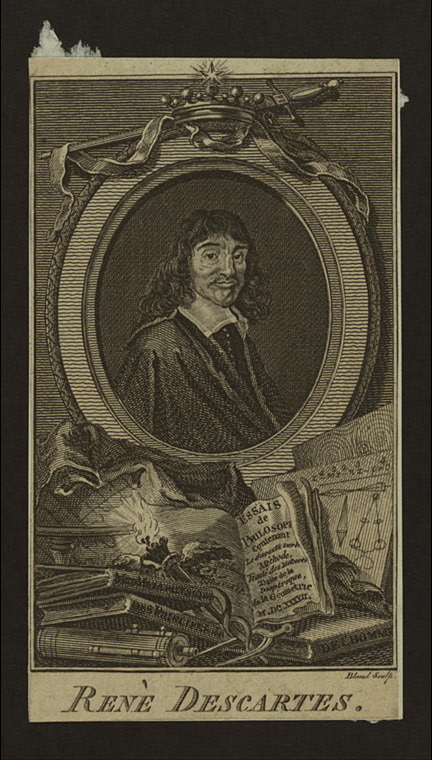All Possible Worlds
Pangloss Regained
 Dr. Pangloss Surveys the World (NYPL General Research Division)Thanks to Candide, the term "pangloss" has come to mean "overly optimistic fool." The Greek roots in the name, "pan-" and "gloss-" can be read as "all tongue" – an apt characterization of the tutor's speaking-without-thinking style. But I have another sense of the word in mind when I say that Candide was published in the hangover years of a nearly century-long panglossomania binge.
Dr. Pangloss Surveys the World (NYPL General Research Division)Thanks to Candide, the term "pangloss" has come to mean "overly optimistic fool." The Greek roots in the name, "pan-" and "gloss-" can be read as "all tongue" – an apt characterization of the tutor's speaking-without-thinking style. But I have another sense of the word in mind when I say that Candide was published in the hangover years of a nearly century-long panglossomania binge.
In the 17th century, "pangloss" was sometimes used to mean "language for all" -- a universal language that all can speak. Many of the great thinkers of that era were involved in creating such a language. Latin was losing ground as a lingua franca just as major innovations in science were being made, and scholars worried about the best way to propagate their findings. At the same time, the development of mathematical notation was giving rise to modern physics and calculus. The new method of mathematical description – symbols and variables instead of words, equations instead of sentences – made it easier to draw generalizations that hadn't been noticed before. It was also universal; it could be understood no matter what your national language was. A tantalizing idea took hold: what if we could express all our thoughts this way? What if we had a universal language that could expose the truths of the universe?

The most thoroughly worked-out version of a philosophical language was published in 1668 by John Wilkins, a founding member of the Royal Society. Wilkins's manuscript was a 600-page taxonomy of every concept in the universe along with instructions for composing words that would stand for those concepts. It was received with high praise by the scientific community and studied by Newton, Locke, and Leibniz (who later made his own attempt at a language based on the mathematical combination of concepts). The king even expressed an interest in learning Wilkins's language. But the king never did learn it, and within a few decades the whole universal-philosophical language idea had become a subject of mockery. Jonathan Swift satirized the idea of a perfect language of concepts in Gulliver's Travels when Gulliver visits the "grand academy of Lagado" and learns of its "scheme for entirely abolishing all words whatsoever." And Voltaire, with the character of Pangloss, skewered the naïve optimism behind the quest for a universal language.
In the 18th century, plans for universal languages or writing systems continued to crop up here and there, but the era of language invention was over-- the first era, that is. In the second half of the 19th century the fever for language engineering would take over again. The new languages would not be perfect philosophical systems, but regularized hybrids of European languages. Of the nearly 300 languages created from 1860-1940, the most famous and successful one was also the most optimistic one – Esperanto. Its name is based on the Latin root for "to hope."
Kandid : aŭ, La optimismo / Esperanta traduko de E. Lanti. Antaŭparolo de la tradukinto. Ilustroj de R. Bartelmes.
Arika Okrent received a joint Ph.D. in the Department of Linguistics and the Department of Psychology's Cognition and Cognitive Neuroscience Program at the University of Chicago. She has also earned her first-level certification in Klingon, and is the author of In the Land of Invented Languages: Esperanto Rock Stars, Klingon Poets, Loglan Lovers and the Mad Dreamers who tried to Build a Perfect Language. She lives in Philadelphia.
Read E-Books with SimplyE
 With your library card, it's easier than ever to choose from more than 300,000 e-books on SimplyE, The New York Public Library's free e-reader app. Gain access to digital resources for all ages, including e-books, audiobooks, databases, and more.
With your library card, it's easier than ever to choose from more than 300,000 e-books on SimplyE, The New York Public Library's free e-reader app. Gain access to digital resources for all ages, including e-books, audiobooks, databases, and more.
If you don’t have an NYPL library card, New York State residents can apply for a digital card online or through SimplyE (available on the App Store or Google Play).
Need more help? Read our guide to using SimplyE.